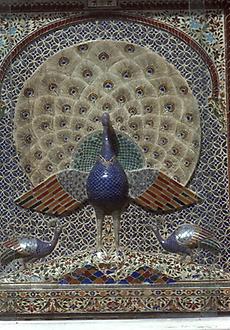The East with its historical attraction in German architecture#
All photos were taken by the author in the years 1985, 1988 and 2000. They are part of his archive "Picture-flood Jontes".
Curiosity of humans arises from everything that lies in the far distance and beyond one’s world of experience. It is “outside” and therefore according to the Greek term “exotic”. Remote countries produce things that have always evoked desire. In ancient time spices and silk reached the West, then Chinese and Japanese porcelain and finally the three hot drinks tea, coffee and chocolate. The countries of origin were Asia, Africa and America. They combined the luxury delicacies with ceramic tableware which they were able to produce on their own.
In the castles of the potentates the collections continued to grow, and porcelain cabinets were not uncommon. The most unusual porcelain cabinet in Germany is the so-called Tea House in the park of the castle Sanssouci in Potsdam Schloss Sanssouci Potsdam , the favourite castle of the Prussian King Friedrich I, the Great. The elegant construction has nothing in common with Chinese architecture at a first glance. In art history it is called Chinoiserie. With its asymmetrical forms of decoration in the Rococo it illustrates the transition from the overloaded late baroque to the cool classicism of the outgoing 18th century.
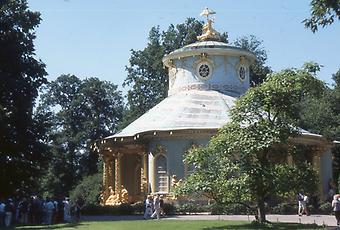





In 1754, the architect Johann Gottfried Büring began to build the column-supported rotunda according to models in the Lorraine. Under its protruding, non-Asian swinging roof six groups of persons made of sandstone lean against the columns. They drink tea, chat, flirt and eat exotic fruit. The sculptors Johann Peter Benckert and Joachim Matthias Heymüller created these masterpieces of relaxed socializing.

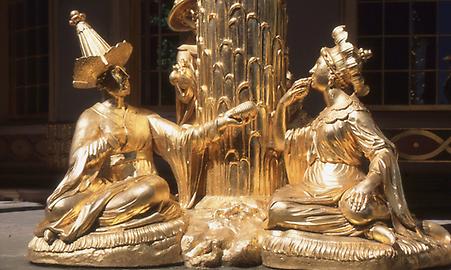




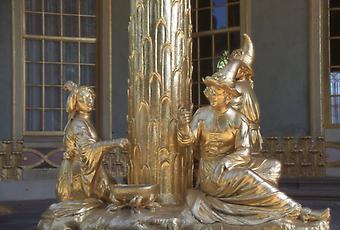

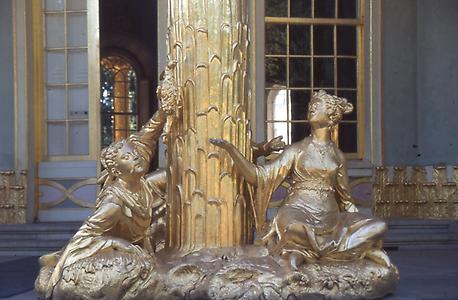

Everything shines of gold. The gold plating weighs a total of two kilos and has to be renewed every 30 to 40 years. Inbetween there are musicians of both sexes who, under the guidance of a music director, play strange table music on bizarre instruments which imagination thought to be “Chinese”. Without music, there was hardly a festivity in these circles in the Baroque period. In this architectonical setting nothing is considered to be Chinese. It is just a China of imagination! From time to time the Prussian King visited the teahouse in order to admire his collection of Asian porcelain.
As was customary in Baroque music, also the „Chinese“ played standing up with string-, plucked-, and wind instruments and drums. They had no idea about Chinese music and Chinese instruments.






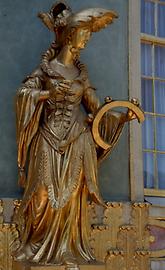


When, under Prince Eugene, the expansive force of the Ottoman Empire was broken and there was no longer any fear of being directly attacked by Turkish armies, because they had been thrown back far beyond Belgrade, the exotic charm of the Orient was suddenly recognized. This was expressed at various cultural levels. It was more than just the desire to enjoy coffee.
In music, the model of „alla turca“ was spreading. The pipers and drummers of the military were replaced by the “Turkish” brass music, cymbals, drums, and Turkish crescent. On the occasion of the Turkish Siege of Vienna 1683 people were very afraid of this music. One of the highlights with regard to music and literature was the “noble Turk” as Mozart had characterized him in his "Abduction from the Seraglio".
The Palatinate castle with one of the most beautiful baroque gardens in Europe is situated in Schwetzingen, the asparagus town in Baden-Württemberg. The extensive facilities offer everything that a prince's heart could delight.


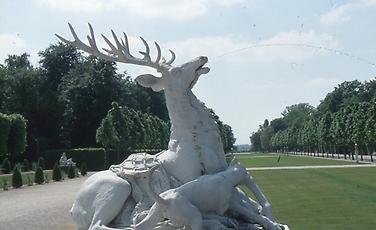


There is a mosque, as it was imagined in the eighteenth century, although the Orient, especially the Turkish one, must have been better known because of contemporary printing. The architect Nicolas de Pigage created the mosque. The model was an oriental building in the Park of Kew near London.
It was built and equipped in the interior from 1777 to 1795. The Red Mosque in the southern part of the park, the Turkish Garden, is one of the typical ornamental buildings. It had no liturgical function. After all, the Islamic crescent moon can be seen again and again at the top of the domes. Apart from the mosque in the castle park of Schwetzingen, there are temples dedicated to Minerva, to Apollo, and Merkur with motifs from antiquity which had to serve other emotions.



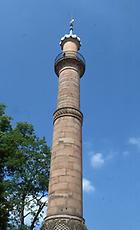







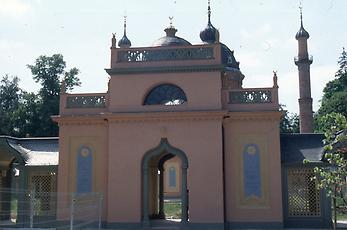

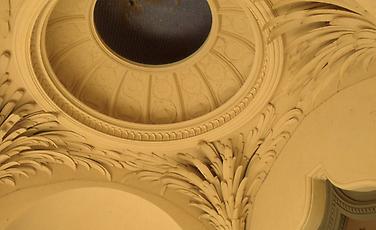
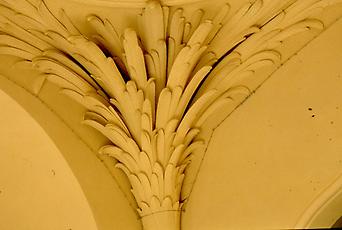






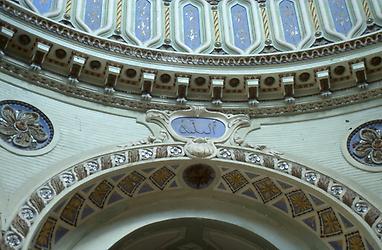

The Bavarian King „Kini“ Ludwig II had the abnormal desire to construct buildings based on the model of the Wagnerian Middle Ages. With respect to architecture his ideal was the king of sun, Ludwig XIV. On the extensive grounds of the castle Linderhof Palace there is the “Moorish Kiosk” with its contribution to the Middle East.
King Ludwig II was placed under supervision because of this maniac building passion. The expenses had weakened the state budget too much. His buildings which, today, are among the country's major tourist attractions and sources of income, seem to come from all possible epochs and styles. Castle Herrenchiemsee competes with Versailles, Neuschwanstein is a fantastically elevated medieval castle. With castle Linderhof he surrounded a baroque palace in the midst of a magnificent park with monuments of his passion for Richard Wagner: The Venus Grotto for the opera Lohengrin and the Hunding’s Hut for "Die Walküre (The Valkyrie)". Not far away there is the „Maurische Kiosk“ ( “Moorish Kiosk”) to represent the East.
The Moorish Kiosk is older than the castle Linderhof which was completed in 1878. The building was created by the Berlin architect Karl von Diebitsch for the world exhibition of 1867. Later the Kiosk was bought by the owner of the Bohemian castle Zbirow. In 1876, the Kiosk was bought by “Kini”. After an adaption it was partly re-equipped and set up in the park of castle Linderhof. The kiosk is already a typical engineering building that combines an iron construction with wood and some new building materials. On the outside, it is clad with ornamented zinc castings. Inside, there are coloured gypsum boards which are covered with rich ornamentation.








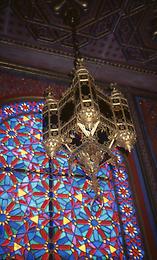

This peacock looks very exotic effect. However, it violates the pictorial rules of Islam, not to depict living beings like animals, humans and plants artistically. In Hinduism the peacock is a sun symbol and the mythical riding animal of the son of Shiva Subhramanya / Karttikeya who is especially worshiped in South India.
A peacock relief of this kind as can be found as a wall decoration in the palace of the Maharana of Udaipur in India, might have served as a model for the peacock depiction at the Moorish Kiosk in Linderhof. In Hinduism, this bird (Hindi mor) is regarded as a riding animal of Shiva’s son Subhramanya and as a sun symbol.



